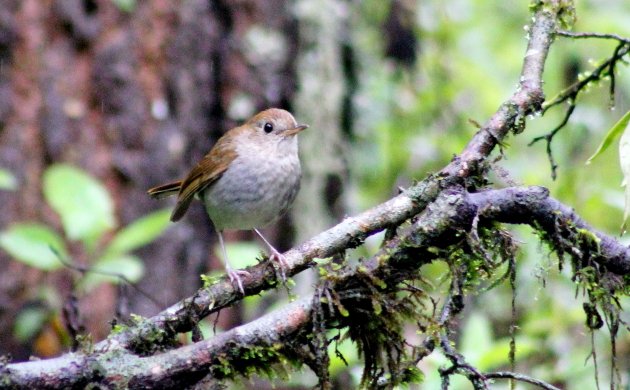
We all have them: families of birds that are maddeningly similar, forever leaving nagging doubts about our identifications. Gulls. Terns. New World Warblers in non-reproductive plumage. “Old World” Warblers, any time of the year. Empidonax flycatchers, oh God, Empidonax flycatchers. (Someday I will get up the nerve to write about the ten, yes, TEN Empidonax species I believe I have seen in my little corner of Mexico. Not to mention the four Myiarchus flycatchers present in the same area. But I am afraid to post my photos of these with IDs, since I am never quite sure I got them right.)
Many of these species are common and widespread, making them just that much more challenging. Birders throughout the Americas can experience the chalenges of Gull, Tern, New World Warbler, and Tyrant Flycatcher identification. The same is true for the smaller Thrushes with spotted breasts, which can be quite difficult. (My region, thankfully, only seems to host migratory Hermit Thrushes from this group.
But you have to be in southwestern Mexico, where I have lived for the past 25 years, to experience the difficulties of identifying Nightingale-Thrushes, which make up one part of the Thrush genus Catharus. Catharus Thrushes are small forest-dwelling Thrushes, and the Nightingale-Thrushes are the members of this group that have never become migratory.
There are Nightingale-Thrushes all the way from central Mexico to Argentina, although the range maps for all these species show only narrow strips following mountain ranges. Many of the South and Central American Nightingale-Thrushes, which I have not yet seen, look, to my inexperienced eye, easy to identify.
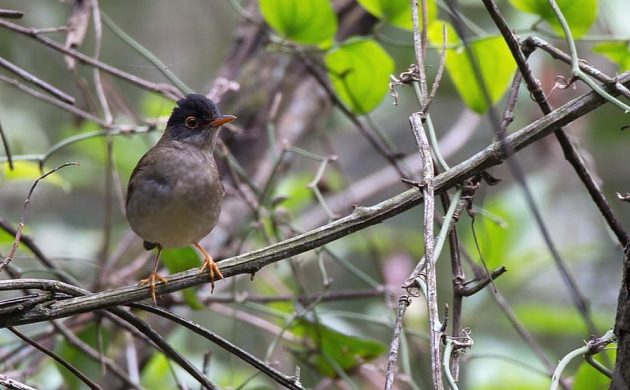 See? Easy! A Black-headed Nightingale-Thrush, photographed by my friend Fabián Velázquez.
See? Easy! A Black-headed Nightingale-Thrush, photographed by my friend Fabián Velázquez.
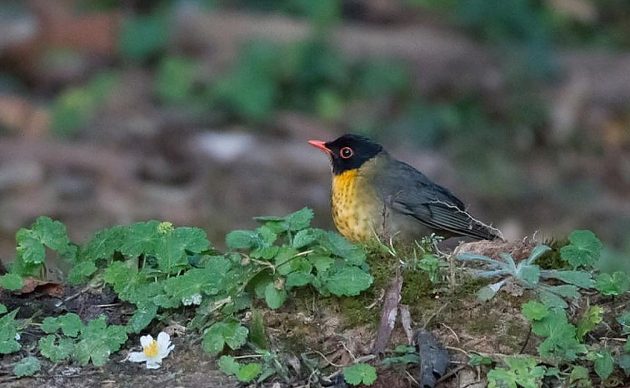 And what could be easier than this beautiful Spotted Nightingale-Thrush? Thanks again, Fabián!
And what could be easier than this beautiful Spotted Nightingale-Thrush? Thanks again, Fabián!
But in my little corner of the earth, we have only three species, and all three are the very definition of LBJs (Little Brown Jobs). Of these three, the Orange-billed Nightingale-Thrush is the easiest to identify, because of, well, its orange bill. If you can see it. Which you won’t. The Orange-billed Nightingale-Thrush is by far the most vocal of the three; an almost constant presence in the canyon near my home at the edge of the city of Morelia. Unless it is the height of mating season, this is a bird you will hear, but not see. And then you will hear it again, a little further up the canyon, and again, and again. But you will not see it.
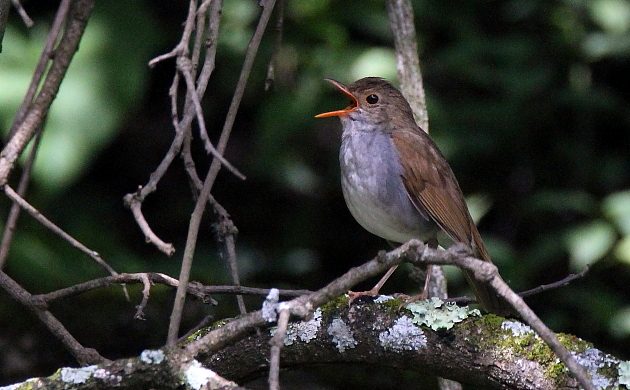 I know, I said you will not see this bird and its orange bill, and then show photographic evidence that you can. But then, I’m a close neighbor… and this photo is from my default birding patch.
I know, I said you will not see this bird and its orange bill, and then show photographic evidence that you can. But then, I’m a close neighbor… and this photo is from my default birding patch.
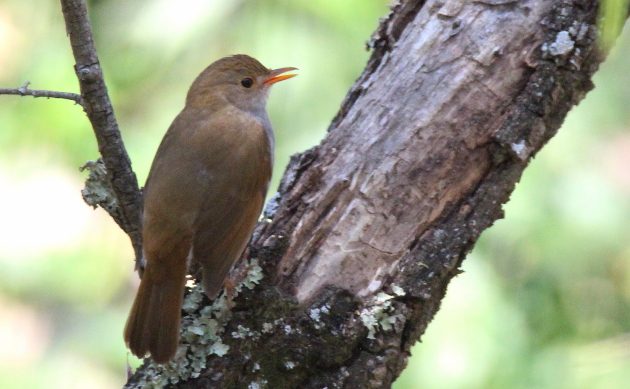 As is this one. Little Brown Job!
As is this one. Little Brown Job!
Our other two local Nightingale-Thrushes prefer to live much farther from human presence, and at higher altitudes. In my experience, they are much less vocal, although that is not a terribly important point, since I have yet to learn to distinguish the three species’ typical jangly Thrush calls. While the center of the Orange-billed Nightingale-Thrush‘s alititudinal range is around 5,500 feet (1,700 m), in my area, I am more likely to see the Russet Nightingale-Thrush at an altitude of 7,500 feet (2,300 m). And only one field mark seems to me to be reliable: no orange at all on its bill.
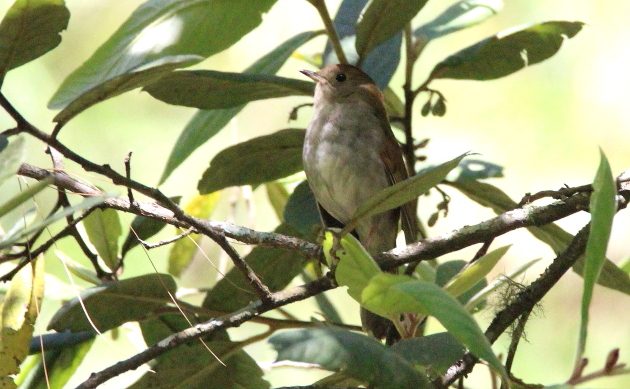 See? No orange. The photo above this post is also of a Russet Nightingale-Thrush.
See? No orange. The photo above this post is also of a Russet Nightingale-Thrush.
The Ruddy-capped Nightingale Thrush is, in my experience, the hardest of the three species to see. Perhaps this is because I have to go all the way up to 10,000 feet (3,000 m) above sea level to find it. I know of two field marks to use with this species. First, its breast is somewhat darker and more mottled than on the other two species. But since I always see it on the ground, in dense and dark forest, this mark is difficult to perceive reliably. Which leaves bill color: much less orange than on the Orange-billed, but more than on the Russet.
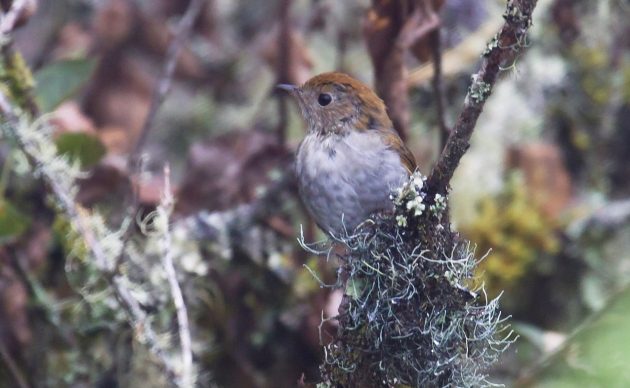
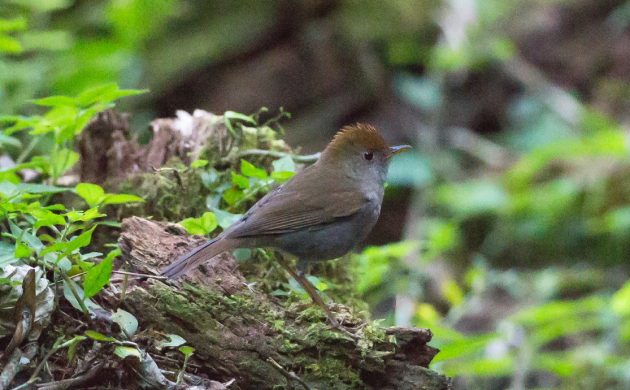 Both photos by another friend, Rubén Deschamps. This is a deep-woods species, and my best photos, unfortunately, reflect that fact all too well.
Both photos by another friend, Rubén Deschamps. This is a deep-woods species, and my best photos, unfortunately, reflect that fact all too well.
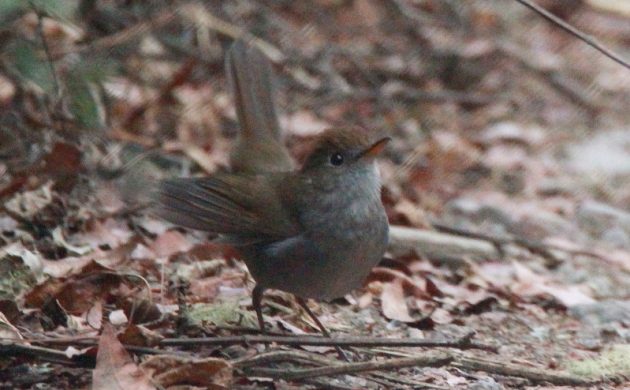 Although this photo of mine does show the bill color.
Although this photo of mine does show the bill color.
Having said all of this, I must say that the Nightingale-Thrushes are a charming little group. They are just hard to identify. So if you get bored with wrestling with the Empidonax flycatchers and juvenile gulls… Come on down!













I know all about that crisis of confidence.
I usually look the other way and pretend that I haven’t seen the empidonax. That way I can sleep at night.
Thanks, Kai!
Simon, I’m preparing for a trip by writing several posts in advance. So I went ahead and took the plunge; stay tuned for a post dedicated to the empidonax. It will be a mostly unhelpful rant.